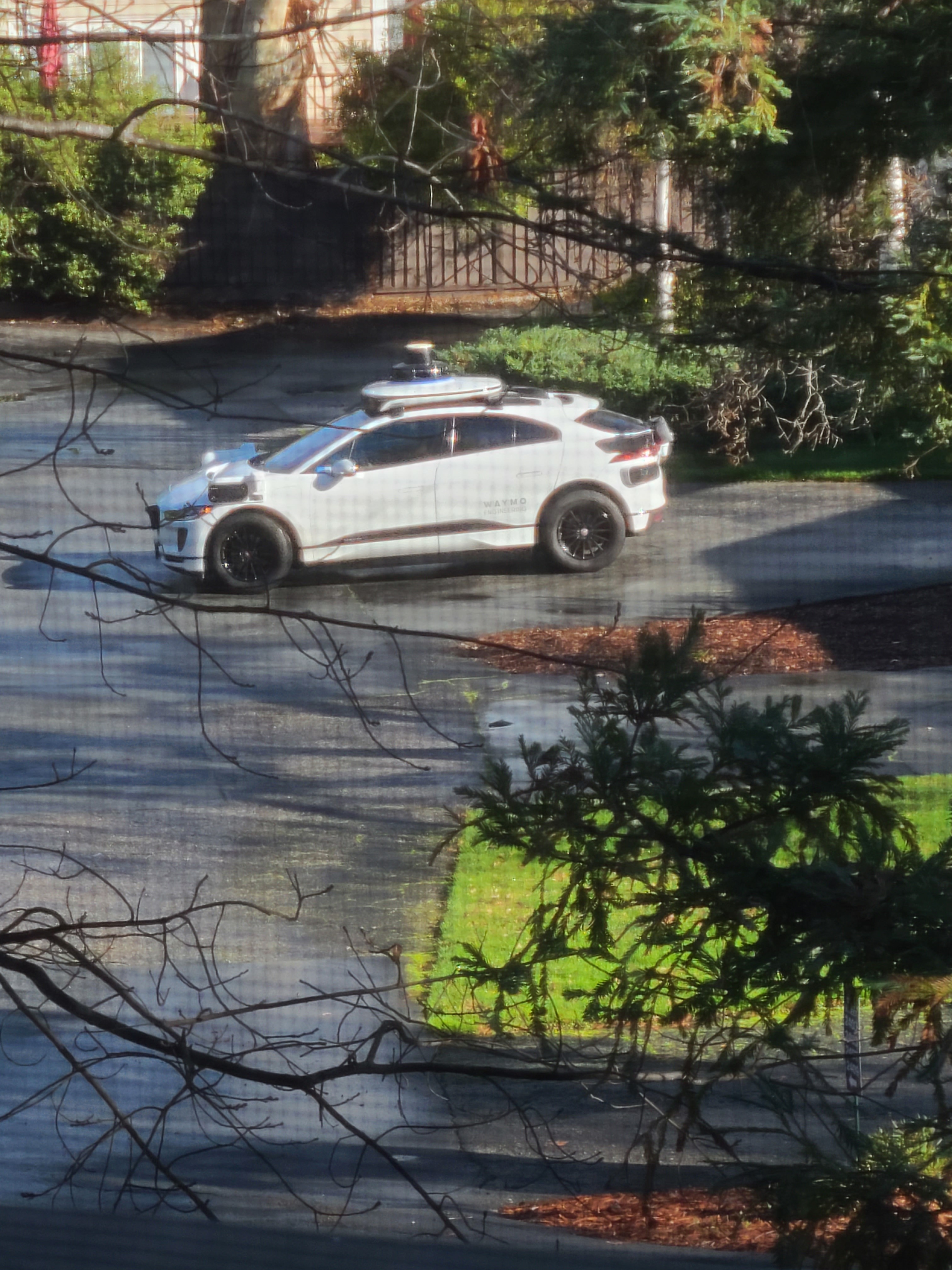窓から外を覗いたら、走行するWAIMOの車が見えた
In January, this year I peered out my office window, and saw a Waymo vehicle navigating the roadways in my townhouse complex.


I live in Menlo Park, California (next to Palo Alto and just up the road a bit from Waymo HQ in Mountain View). So seeing semi-autonomous vehicles being tested is not that big a deal. Although a couple of years ago the quiet street just outside my townhouse complex was a hangout for three or four parked Zoox vehicles, taking a semi-autonomous break together. But alas, they moved on to presumably more technologically challenging rendezvous locations.
But back to the Waymo vehicle navigating the modestly complex, but very lightly trafficked, roadways where I live. Why? Mystery sort of solved with Waymo’s recent August 6 announcement that it was expanding its Waymo One service area from most of San Franciso into the northern part of San Mateo County (in which Menlo Park is located).
This does offer an opportunity for a brief rethink (or more accurately a re-re-rethink) about what the gradual (aka quite gradual) development of autonomous vehicles means for the insurance industry.
The first report in series of Celent reports, in May 2012, A Scenario: The End of Auto Insurance: What Happens When There Are (Almost) No Accidents?, was a think piece about a future in which technologically mature autonomous vehicles had a dominant share of the fleet on the road. Consequently there were almost no accidents. And almost no accidents would, of course, mean almost no need for personal auto insurance, with a vastly reduction in revenue to insurers.
Okay, that has not happened, yet.
Peering ahead, 14 years later, what do I see?
- Autonomous vehicle technology has progressed very slowly. Robotaxis (including Alphabet’s Waymo, Amazon’s Zoox, GM’s Cruise) are still . . . robotaxis . . . operating in limited geofenced territories.
- Even so, in its Q2 2024 10-Q, Alphabet announced a new multi-year $5 billion investment in Waymo
- Much more progress, and manufacturers’ focus, has been on expanding ADAS features (e.g., adaptive cruise control, lane keeping assistance, blind spot monitoring) in production vehicles that you (or I) can buy today.
- Although while these technologies are very promising, insurers are wrestling with the financial trade-offs of potentially reduced frequency of losses against potentially higher severities (i.e., cost of repair or total losses).
- Social attitudes towards fully autonomous vehicles remains . . . cautious . . . or perhaps more than cautious. AAA’s 2024 US consumer survey reported a remarkable 66% of respondents expressed fear of, and 25% expressed uncertainty about, autonomous vehicles
- Ethical questions -- regarding how autonomous vehicles should be programmed to make the kinds of life and death decisions which human drivers sometimes face – are much discussed, but hardly resolved. (Possible WSJ paywall)
In sum, what I think in September 2024; the economics of autonomous vehicles have to be solved (which will take a while) before insurers have to plan for the end of auto insurance.

